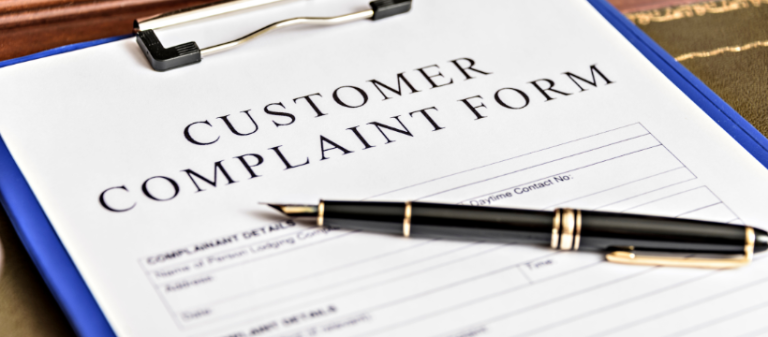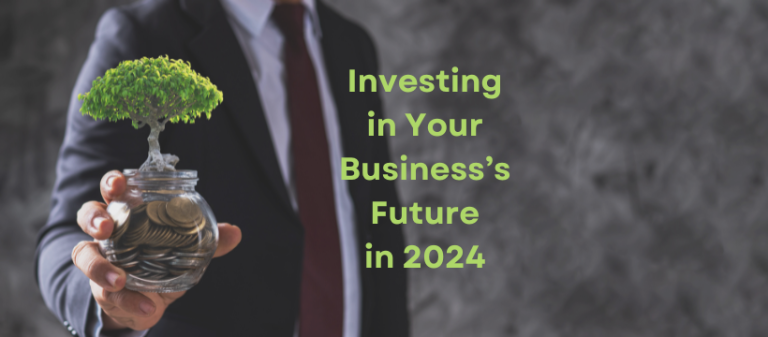Calculating and Understanding Your Business’s Retention Rate
Understanding your business’s retention rate is crucial; it helps assess customer satisfaction, loyalty, and overall business health, providing valuable insights for strategic decision-making and long-term growth. It’s really not as complicated as it seems. In this article, we’ll explore how to calculate and interpret your retention rate to gain valuable insights into your customer base along with factors that are influencing some strategies you can do today to get the ball rolling.
What is Retention Rate and Understanding its Significance in Business?
Of course, to calculate your retention rate you will first need to know what it is and how it can affect your business.
Retention rate is a vital indicator of customer satisfaction and loyalty. It shows the proportion of clients who decide to stick around and use your business’s products or services for an extended amount of time. This metric is important for companies in all sectors because it offers information about how well customer retention strategies work, how well customers are served, and how well the company is doing overall. The retention rate is essentially a useful indicator of long-term success and sustainability since it shows how committed and loyal your customer base is. Although the calculation of retention rate may seem simple, many important and far-reaching implications are associated with this metric. These aren’t the only reasons it is a few of the reasons why every company, no matter how big or small, needs to focus exclusively on comprehending and enhancing its retention rate.
Find out more reasons in our previous blog “Why Focus On Customer Retention” where we get into the nitty gritty of reasons.
The Importance of Retention Rate
Retention rate serves as a vital indicator of a company’s health and success, regardless of its size or industry. A high retention rate signifies more than just customer loyalty; it reflects the satisfaction and trust customers have in your brand, fostering long-term relationships and repeat business.
- Enhanced Customer Lifetime Value – a robust retention rate is closely linked to long-term profitability, as loyal customers tend to spend more over their lifetime and are less sensitive to price fluctuations.
- Cost Savings – a strong retention rate directly impacts revenue growth by minimizing the need for costly customer acquisition efforts.
- Advocacy and Word of Mouth – By retaining existing customers, businesses can reduce their overall marketing spend and allocate resources more effectively.
- Predictable Revenue Streams – Having repeat customers allows you to predict their purchases/subscriptions in the future allowing for that long-term revenue stream.
If there’s going to be any time to get invested in your business it’s now, check out the importance of focusing on customer retention this year.
“Retention is the single most important thing for growth.”
– Alex Schulz, VP Growth, Facebook.com
Calculating Retention Rate
Step 1: Choose Your Timeline
Decide on the period for which you want to calculate the retention rate. This could be your fiscal year, calendar year, quarterly, monthly, etc.
Step 2: Gather The Data
Now that you have figured out which timeline you would like to focus on then you can ‘Gather The Data’, and what you will need to gather is this:
E – The number of customers your business had at the end of your chosen time period
N – The number of new customers gained within your chosen time period
S – The number of customers your business had at the beginning of your chosen time period
By plugging these figures into the equation, you can determine the percentage of customers who have remained loyal to your business over a specified timeframe.
Step 3: Apply The Formula
Now that we have all the data needed, let’s calculate your retention rate:
[(E – N) / S] x 100% = Customer Retention Rate %

Seem simple enough? Here’s a great example to put it all into play:
Your business has 200 customers at the end of your chosen time period = E
During your chosen time period you had acquired 65 new customers = N
At the beginning of your chosen time period your business started with 165 customers = S
[(200 – 65) / 175] x 100% = 77.14%
Or an easier way……use this online Customer Retention Rate calculator from CleverTap
Accurate and consistent data collection is essential to getting trustworthy insights into how well your company retains customers. You can efficiently measure and comprehend your company’s retention rate with the help of clear data collection procedures and step-by-step instructions. This will enable you to make well-informed decisions and develop strategic plans for future expansion and success.
Understanding Retention Rate Results
When you’re looking to enhance business development within your company you need to understand what you’ve just uncovered (assuming you used the formula above), and not to state the obvious but:
- A high retention rate typically indicates that a significant portion of your customer base is loyal and satisfied, reflecting positively on your products, services, and overall brand experience.
- Conversely, a low retention rate may signal dissatisfaction or issues within your customer journey that need addressing.
Interpreting retention rate percentages is crucial for gauging the health of your business and understanding where alterations and improvements can and should be made. Trend analysis is a powerful tool for identifying patterns and areas for enhancement in your retention strategy. By tracking retention rate trends over time, you can pinpoint periods of growth, stagnation, or decline in customer loyalty. Analyzing these trends helps uncover the underlying factors driving changes in retention rates, enabling you to adapt your strategies accordingly. Whether it’s identifying seasonal fluctuations, response to marketing campaigns, or shifts in customer preferences, trend analysis provides actionable insights for optimizing your retention efforts.
By interpreting retention rate percentages, benchmarking against industry standards, and conducting trend analysis, you can gain a comprehensive understanding of your business’s customer retention performance. Armed with these insights, you can make informed decisions, refine your strategies, and foster stronger, more enduring relationships with your customers.
Factors Influencing Retention Rate
Retaining customers is the lifeblood of any business, and understanding the factors that influence retention rate is paramount to long-term success. There is a list of factors that influence your retention rate of course which are:
- Customer Experience: Maintaining a smooth and happy customer experience is essential to keeping customers. Every touchpoint, from the first conversation to the after-sale assistance, affects the customer’s opinion of your brand and increases the chance that they will come back.
- Product Quality: Customer satisfaction and loyalty are greatly influenced by the calibre and effectiveness of your goods and services. Over time, delivering high-quality offerings consistently fosters trust and strengthens customer loyalty.
- Pricing: Value propositions and competitive pricing have the power to influence consumer choices and impact retention rates. If customers believe your products or services provide better value for their money, they are more likely to stick with you.
- Competition: As customers examine their options and alternatives, the competitive environment may affect retention rates. Understanding your competitors’ offerings and positioning can help you differentiate your brand and enhance customer loyalty.
In a competitive landscape, understanding market dynamics and competitors’ offerings is essential for differentiation and customer retention. By staying attuned to industry trends and consumer preferences, businesses can adapt and evolve to meet changing demands while maintaining customer loyalty. The customer experience remains paramount, serving as the initial point of contact and lasting impression that keeps customers coming back.

Strategies for Improving Retention Rate:
For all businesses aiming for business development, long-term success and sustainable growth, increasing retention rate is a crucial goal. Relationships with your target audience can be strengthened and customer loyalty increased by putting effective strategies into practice. Here are a few actionable approaches for enhancing the retention rate:
- Personalized Customer Experiences: You can greatly increase your customers’ satisfaction and loyalty by adjusting your interactions and offerings to suit their unique needs and preferences. Make recommendations, promotions, and communications more relevant to your audience by using customer data and insights to create individualized experiences.
- Loyalty Programs: Putting in place loyalty programs encourages recurring business and cultivates a feeling of gratitude and uniqueness among your clientele. Rewarding consumers for their ongoing support and involvement promotes recurring purchases and gradually increases brand affinity.
- Outstanding Customer Service: Maintaining clients and establishing enduring connections require outstanding customer service. At every point of contact, make sure that questions are answered promptly and sympathetically, take effective care of problems, and go above and beyond to surpass customers’ expectations.
- Addressing Customer Feedback: A dedication to ongoing development and client satisfaction is shown by actively seeking out and responding to customer feedback. Utilize surveys, reviews, and direct communication channels to regularly ask your customers for feedback. Then, use their insights to improve your offerings in terms of goods and services as well as the general customer experience.
- Ongoing Relationship-Building: Regular communication and engagement efforts are necessary to develop long-lasting relationships with your clients. Maintain a relationship with your clientele by sending out customized emails, engaging with them on social media, and running focused promotions. This will foster a sense of community and loyalty.
Need to implement some strategies today? To get started contact Boost Customer Retention but also take a look at 10 Simple Strategies For Immediate Customer Retention Enhancement
“Growth is not convoluted or magical. It’s very simple: Measure. Test. Experiment. Create a culture of experimentation and celebrate failure just as much as you celebrate success.”
– Chamath Palihapitiya – VC and former VP of User Growth at Facebook
In the intricate fabric of business operations, the retention rate stands as a pivotal metric, offering insights into customer loyalty and overall business health. As we conclude our exploration into calculating and understanding your business’s retention rate, it’s evident that this metric holds significant implications for fostering customer relationships, driving revenue growth, and ensuring long-term success.
By diligently calculating, interpreting, and leveraging retention rate data, businesses can gain valuable insights into customer behaviours, preferences, and satisfaction levels. Armed with this knowledge, companies can implement targeted strategies to enhance customer experiences, address pain points, and strengthen relationships with their clientele.
In today’s competitive landscape, where customer retention is paramount, understanding and actively managing retention rates can set businesses apart. It enables them to forge deeper connections with customers, cultivate loyalty, and ultimately drive sustainable growth. As businesses continue to navigate the evolving landscape of customer expectations and market dynamics, prioritizing retention rate analysis and strategy will remain indispensable for achieving enduring success in the marketplace.







